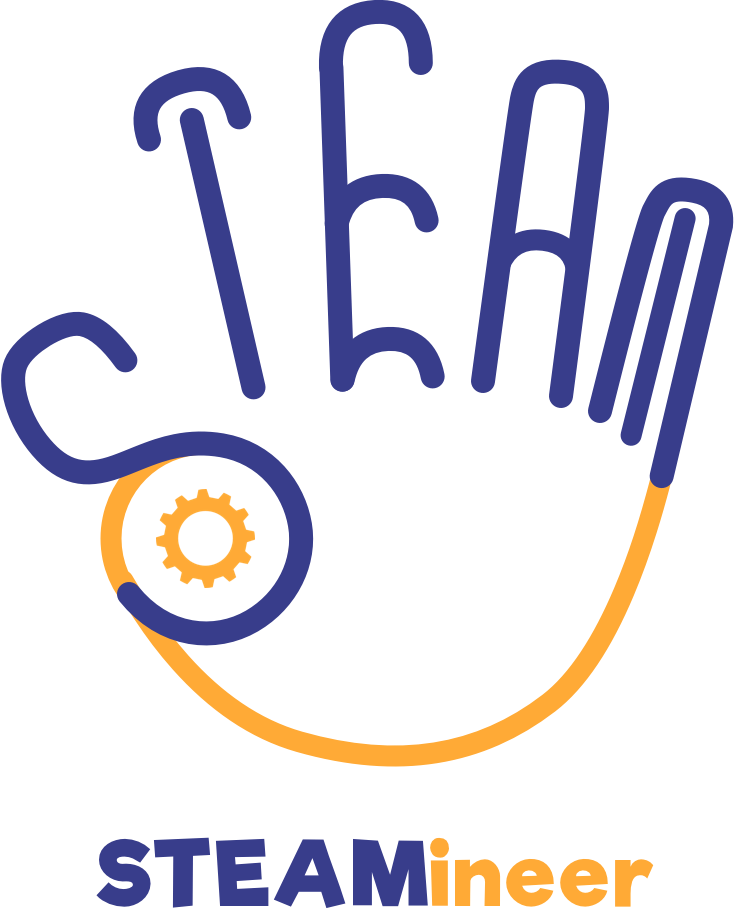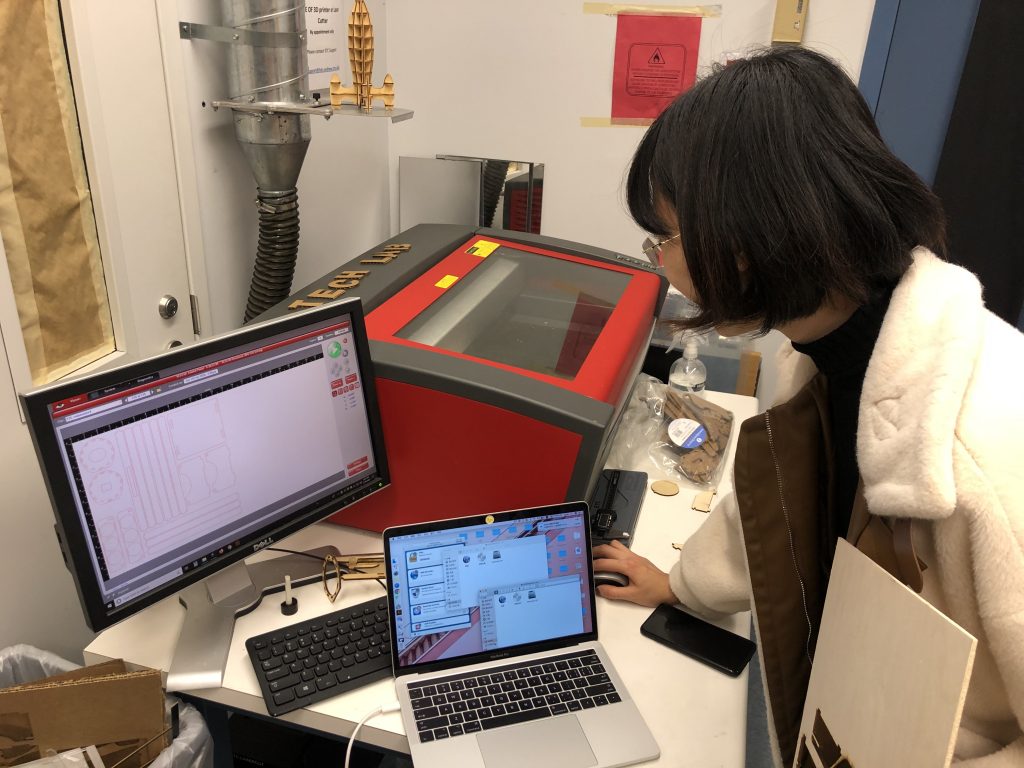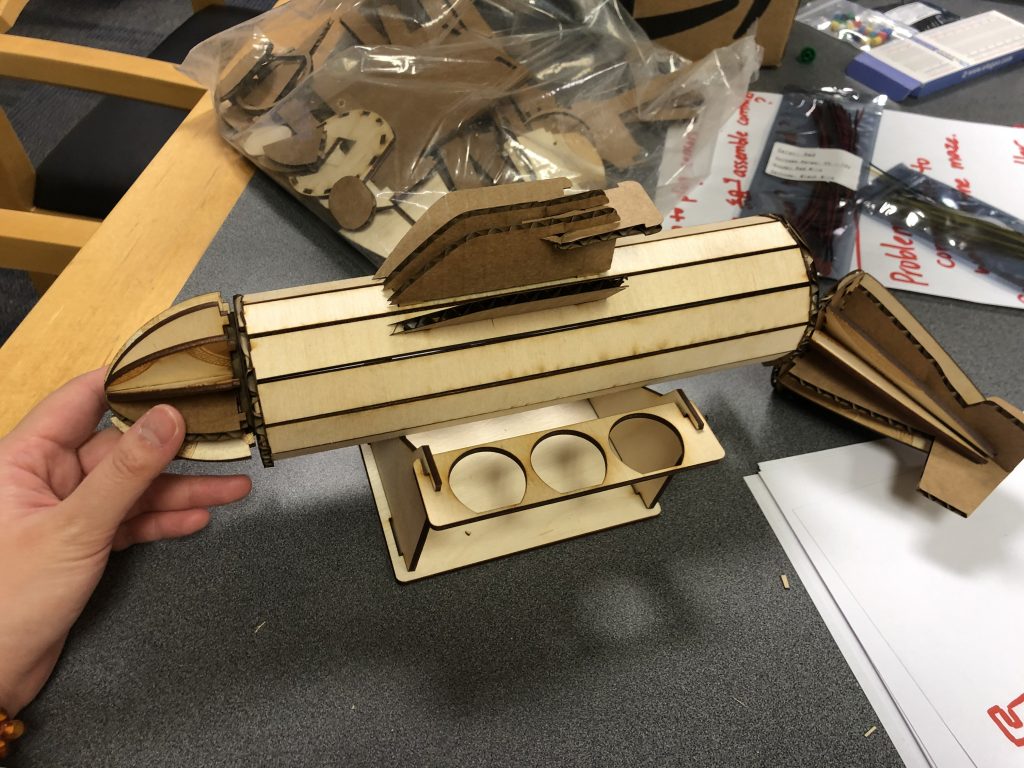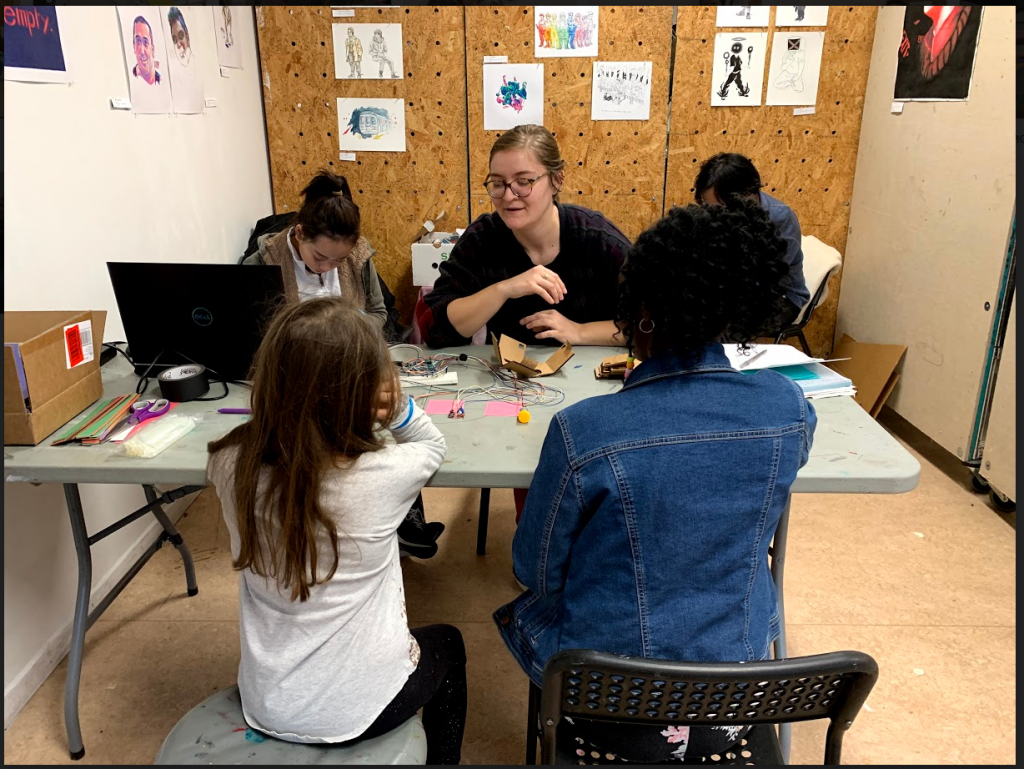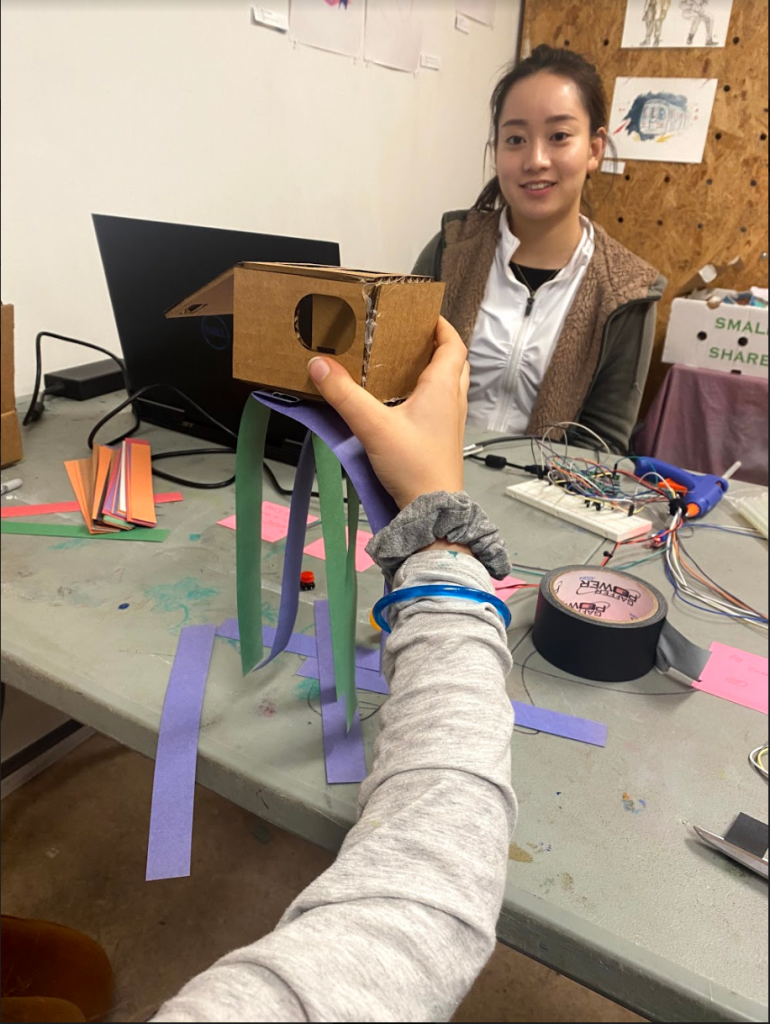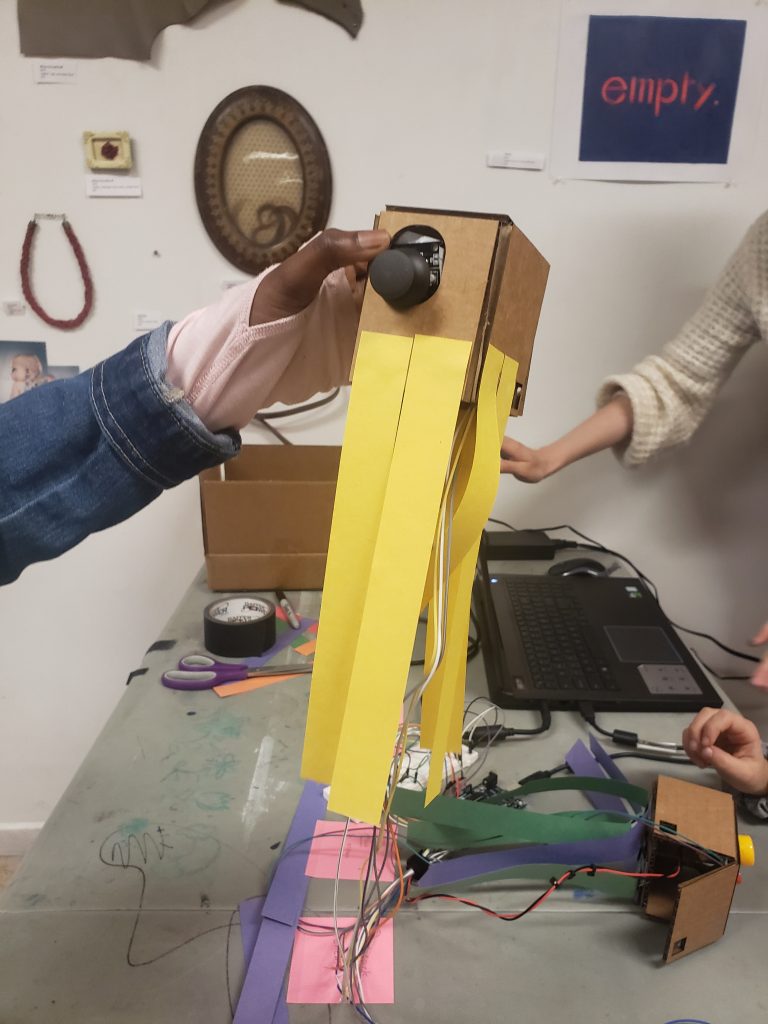Week 7 Team STEAMineer focused on preparing our halves presentations for Week 8 and establishing our partnership with Assemble!
Our faculty meeting on Monday gave us the opportunity to share the first draft of our halves presentation with Dave and Scott. After learning we had started strong with good, specific information, we quickly realized the presentation lacked substantial information about the work we intended to do. (We had too much focus on the work we had done– our past research, playtesting, etc…) With Dave and Scott’s notes, we created a second draft of the presentation to share with our faculty on Thursday. While our presentation had improved, we were still lacking a quality description of what exactly our deliverable was. While we have information about our deliverable, we don’t necessarily fully know what our final deliverable will be. We have a meeting with Anny at Assemble Makerspace on March 23rd where we will get a clearer, more concrete picture, but until then, our deliverable is a pieced together picture of what we know from Assemble’s past summer camps and their after school programming. We worked into the weekend to try to create a more coherent picture of our project. We re-evaluated the order of our slides to clarify our story. We changed our naming protocol to better communicate our work, and we refocused our presentation to tell the story of where we’re going in as specific terms as possible.
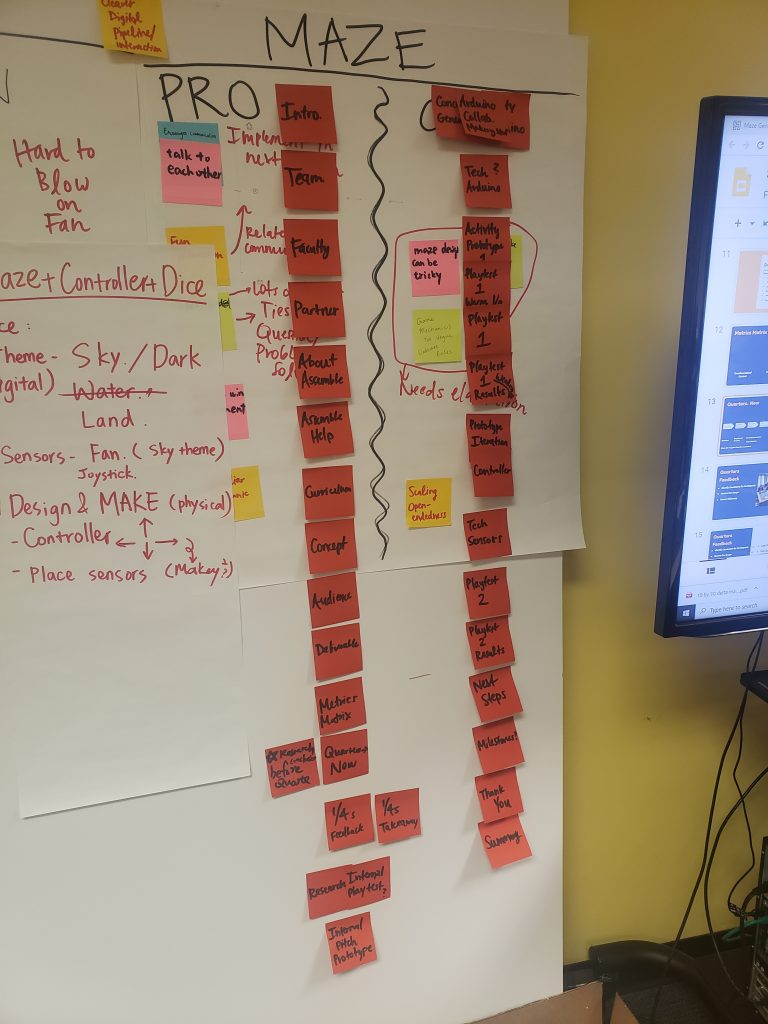
Between editing PowerPoint slides and writing scripts, we also prepared and facilitated our second playtest. For our second playtest we knew we wanted the kids to do more of the making. We learned from our last playtest that they wanted to have more control over how to change and improve the gameplay. Knowing this, we decided to focus on having students build controllers around different Arduino inputs. Mimi worked tirelessly at the beginning of the week to test all of the sensors that came with our Arduino kit. She tested their functionality, robustness, and the kinds of variables they could control.
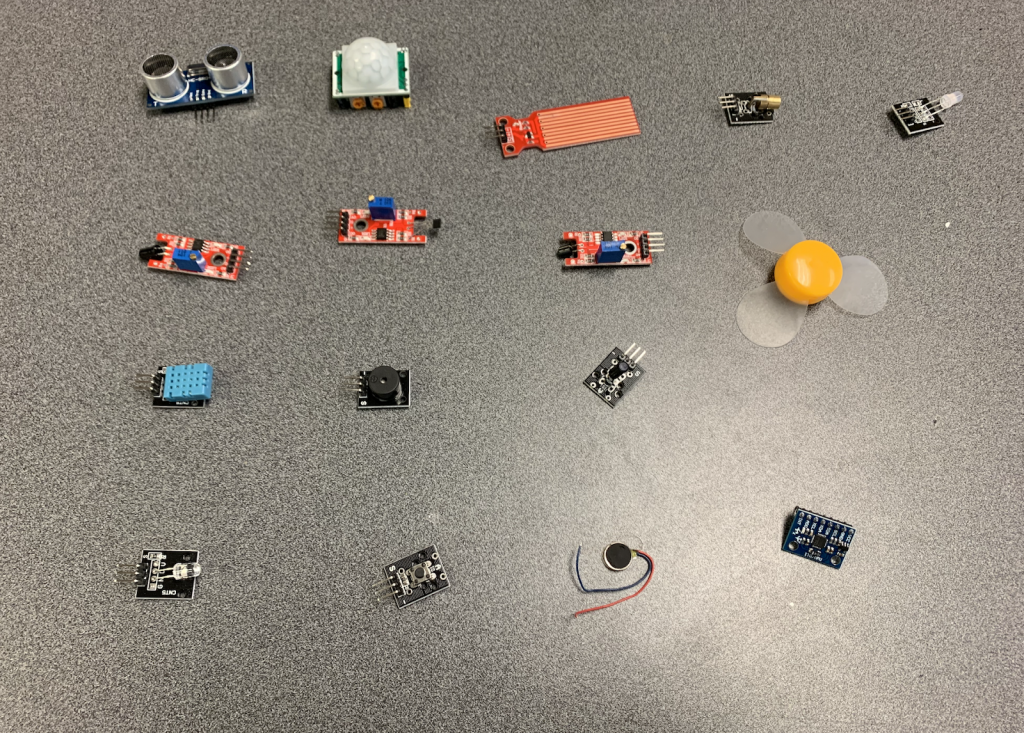
Simultaneously, Mia, Yifan, and Isabel identified the different functions the submarine could conceivably have in our game. (The students also wanted a more compelling storyline for the game.) They identified Power, Attack, Direction, Collect, Energy Loading, and Move as functions the submarine could have. The team took the findings about the arduino sensors and the identified game functions and identified four game functions and five input sensors that could be used for the playtest.
Mia also created a submarine model out of laser cut wood as a prototype for the outer casing of our Arduino micro-controller core. She continues to brainstorm ways to protect the connections between the inputs and the micro-controller to ensure functionality for guests. The idea of the submarine is that it could serve as an outer shell that the core sits in with the extra inputs.
Students’ submarines would have the Move, Energy Loading, Collect, and Attack functions. As a team we decided that the move function would be controlled by the joystick, the energy loading function would be controlled by the motor, and the collect function would be controlled by the button. However, students were given the opportunity to choose between the light sensor and the sound sensor to control the attack function.
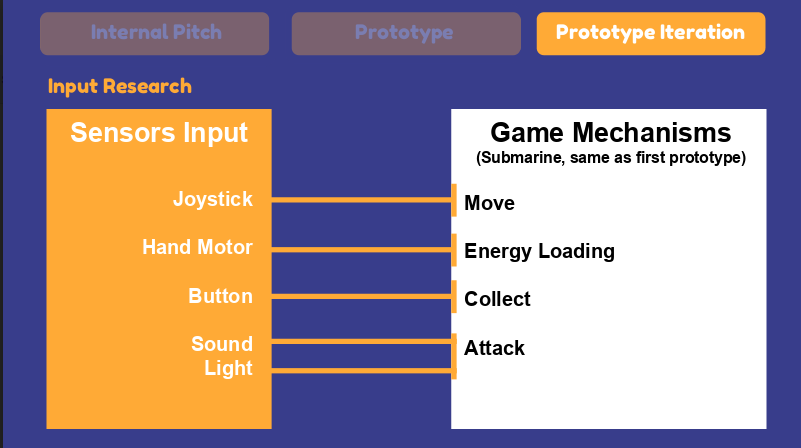
Max reconfigured our first game into a horizontal scroller game. We added in treasure chests that students could raid to collect coins, and enemies students could attack. For this playtest, the enemies were red dots, but for future playtests, we will incorporate sea creatures students can battle. Mia also conducted an internal playtest with the team where we got to test laser cut boxes, molding plastic, and other materials that could be used by students to make their own controllers.
Wednesday we set out to Assemble’s Makerspace to playtest our most recent iteration with students. That afternoon we had two playtest groups with two students in each group. Students were shown the five Arduino sensors (already connected to the Arduino). Students were then prompted to pick between the light sensor and the sound sensor for the attack function. (The first group selected light, the second, sound.) After picking the attack function, the students were asked to decide who would control which functions for the group. Each student was responsible for two functions. Once students had selected their functions, they could then use the provided materials (including flattened, laser cut boxes), to create their controller. The addition of making controllers lengthened our playtesting experience substantially, resulting in fewer playtesting groups. Students spent 15-20 minutes alone creating their controllers. They spent an additional 5 minutes or less playing the game, and we ended the playtest with a student interview.
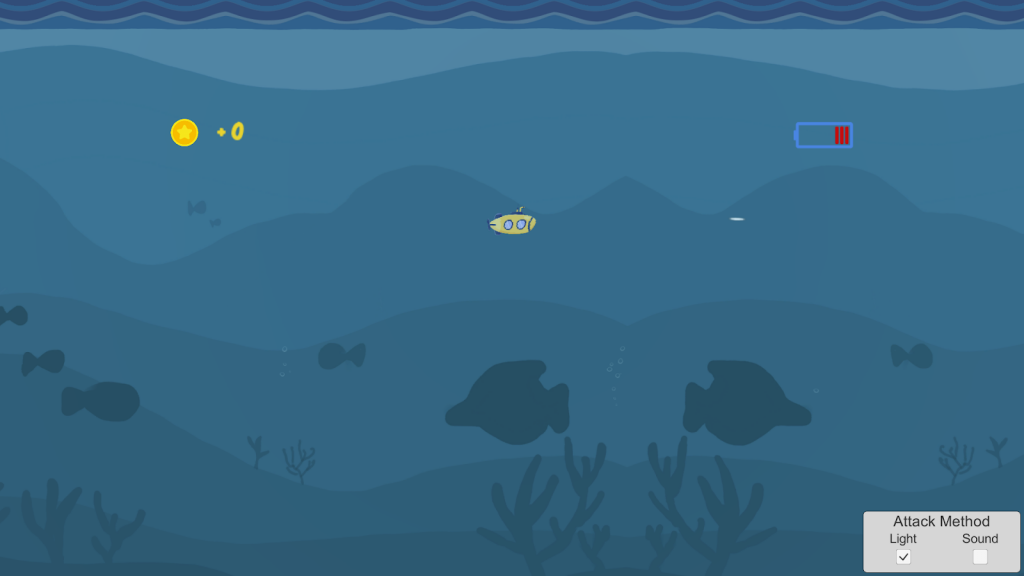
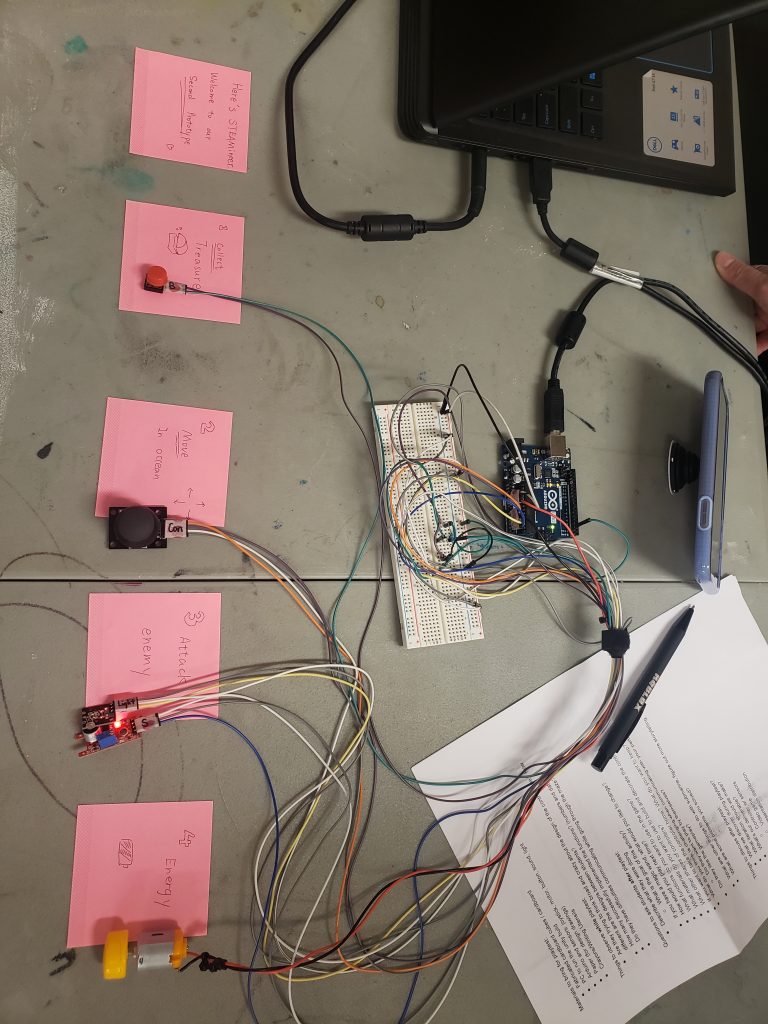
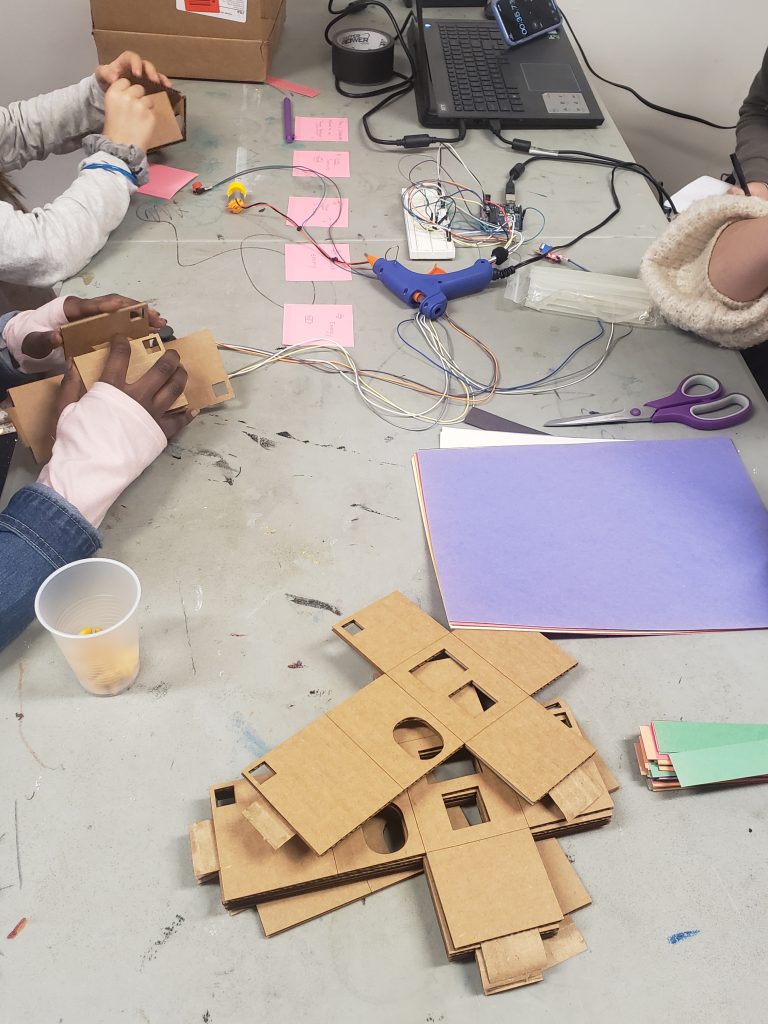
Our first set of playtesters were a 3rd grader and a 5th grader. The girls selected the light sensor as the input for the attack function on the submarine. When they divided up the functions, each student took which function they liked the most first and then they split the other two functions accordingly. They used hot glue to assemble the controller boxes. Both girls used construction paper to decorate their controllers and turn them into a jellyfish and an octopus. From our observations we noticed that the battery level seems to need fairly constant upkeep– once it’s full, the amount drops rapidly. The buttons do not stay in place well– even after students have secured them, when they start interacting, the buttons start to fall through the controller openings. The enemies were also not obvious and we need to identify the orientation on the fan and joystick inputs. The attack function seems to work well and is satisfying for student interaction. Lastly, the light sensor does need a light to be functional, which brings into question if we can consider it a reliable input.
During the post-activity interview, the students described the activity as “making controllers with hot glue and making jellyfish and an octopus”. When asked what they would change if they had a magic wand, the students said they would want more controllers. They were both interested in the others’ controllers and also wanted to test the controls their teammate had. When asked about additional materials they would like to have, they mentioned markers, pipe cleaners, and other ways to make the inputs more stable and hold them in place. They liked having the interaction as two-player and felt like the activity needed multiple people operating the experience. They did say they would prefer to be able to take the buttons home if they were able to take the controller home. The students told us it would be okay if they didn’t get to take the buttons, but it does make it less fun. Finally, because both students had participated in our past playtest, we asked which interaction the students preferred, and one student preferred the asymmetrical maze interaction and the other student preferred the current iteration we tested.
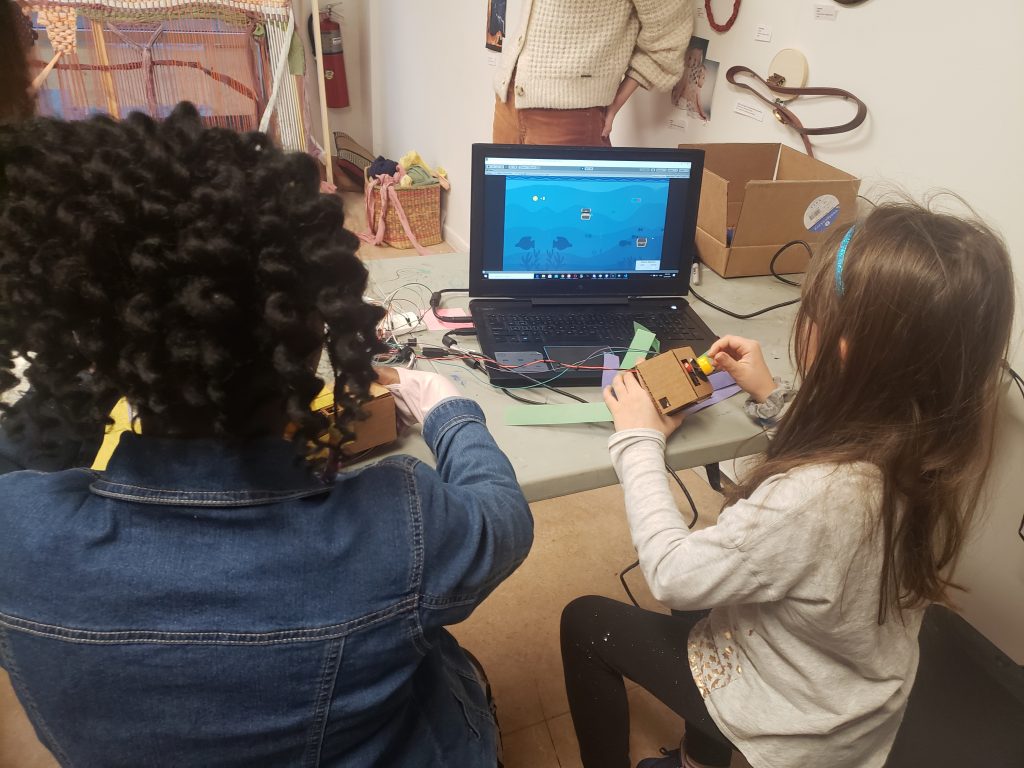
Our second set of playtesters included a 3rd grader and a 4th grader. This pair selected the sound sensor as the input for their attack function. Both players wanted control over the move function, causing the team to have to intervene as facilitators and assign roles. Of the two students, one readily assembled his box, the other student needed more support understanding how it fit together and how to add in controls. Both students preferred using tape to assemble their controller and not hot glue. Similar to the first playtest, the students spent the bulk of the experience creating the controllers. However, in this playtest, the students were less interested in decorating their controllers and more interested in getting to play the game. Lastly, we again observed problems with the stability of the controller inputs. The start of gameplay was delayed to make repairs to the controller. The use of the sound input for the attack function added a fun element– when the submarine needed to fend off an enemy, it resulted in the student animatedly yelling “BAM” into the sensor.
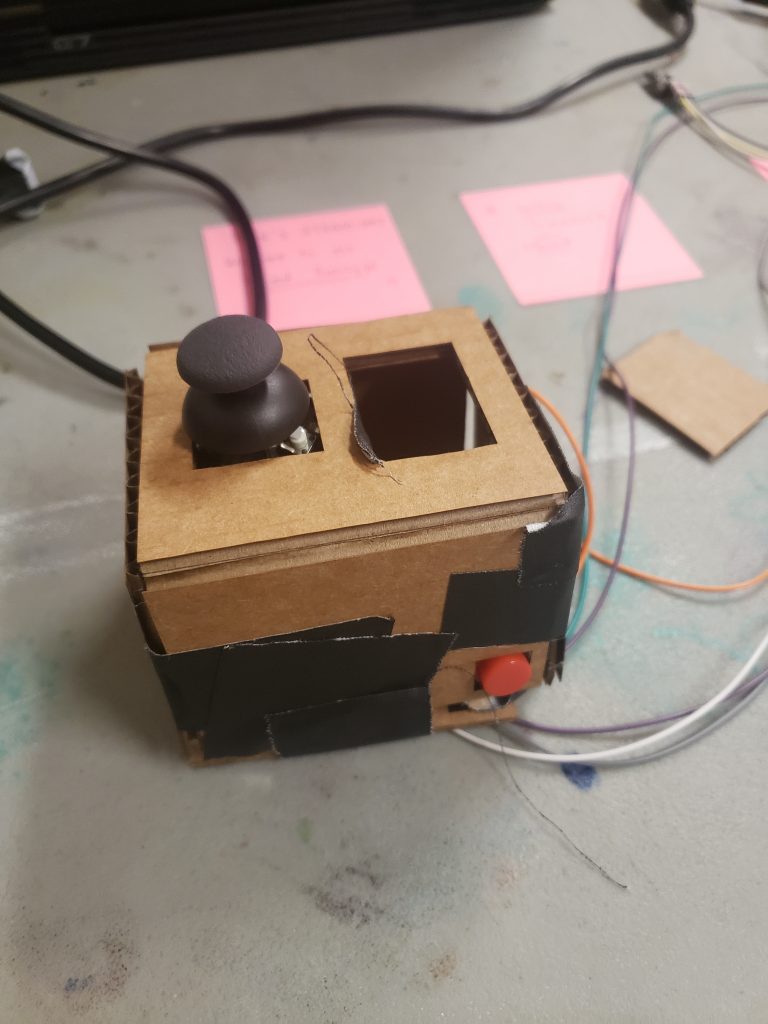
When asked to describe what they were doing, one student responded: “playing a submarine game, collecting treasure, and shooting enemies”. When asked if they had a magic wand and could change anything about the experience, the same student said he would prefer to have a large boss fight where the submarine battles one large enemy for a long time. He also wanted to be able to buy things with the coins he collected and would like more enemy battles overall. He was interested in decorating his controller, but did not have any preference as far as additional materials. Our playtester also let us know that he was more interested in the game. When asked if he would want to take the inputs home at the end of the experience (along with the controllers) he said he would prefer to be able to take them. He also preferred the interaction being two player because it was more fun and it would be harder to play alone.
This playtest also gave us the opportunity to set up a meeting with Anny Chen, Assemble’s Camp Coordinator and the Assemble Afterschool Grades 3-5 Teacher. March 23rd we will have the opportunity to meet with Anny, share our playtesting data, and set expectations for our final deliverable. We are grateful to Anny, Nina, and the team at Assemble for the opportunity to playtest and partner with Assemble.
Stay tuned for video of our Halves Presentation during Week 8 and the results of our third playtest at Assemble!
